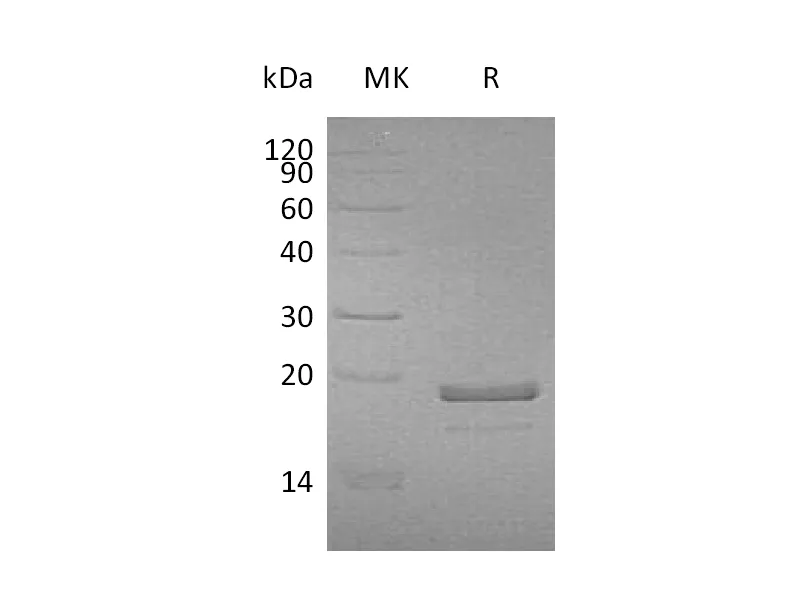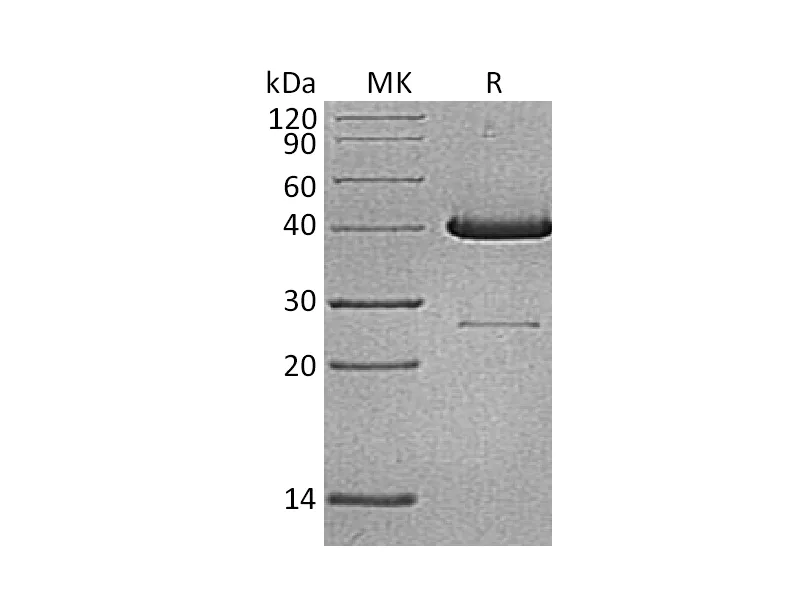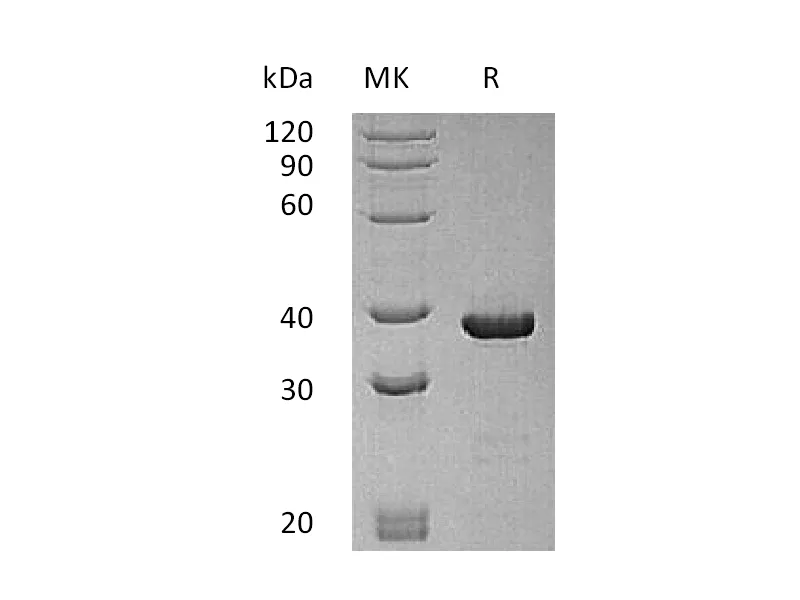| 产品名称 |
Recombinant Human ROR1 (C-6His) |
| 英文名称 |
ROR1/NTRKR1/Inactive Tyrosine-protein Kinase Transmembrane Receptor ROR1/Neurotrophic tyrosine kinase |
| 纯度 |
Greater than 95% as determined by reducing SDS-PAGE |
| 内毒素 |
<1 EU/µg as determined by LAL test. |
| 蛋白构建 |
Recombinant Human Inactive Tyrosine-protein Kinase Transmembrane Receptor ROR1 is produced by our Mammalian expression system and the target gene encoding Gln30-Glu403 is expressed with a 6His tag at the C-terminus. |
| Accession |
Q01973 |
| 表达宿主 |
Human Cells |
| 种属 |
Human |
| 预测分子量 |
42.8 KDa |
| 制剂 |
Lyophilized from a 0.2 μm filtered solution of 20mM Citrate, 5% Trehalose, 1mM EDTA, 0.02% Tween80, pH5.5. |
| 运输方式 |
The product is shipped at ambient temperature.Upon receipt, store it immediately at the temperature listed below. |
| 稳定性&储存 |
Store at ≤-70°C, stable for 6 months after receipt.Store at ≤-70°C, stable for 3 months under sterile conditions after opening. Please minimize freeze-thaw cycles. |
| 复溶 |
Always centrifuge tubes before opening.Do not mix by vortex or pipetting.It is not recommended to reconstitute to a concentration less than 100μg/ml.Dissolve the lyophilized protein in distilled water.Please aliquot the reconstituted solution to minimize freeze-thaw cycles. |
| 分子别名 |
| Inactive tyrosine-protein kinase transmembrane receptor ROR1; Neurotrophic tyrosine kinase, receptor-related 1; ROR1; NTRKR1 |
| 背景介绍 |
| Receptor tyrosine kinase-like orphan receptor 1 (ROR1), also known as neurotrophic tyrosine kinase, it is a member of the ROR family within receptor tyrosine kinases (RTK) superfamily. Human ROR1 is a type I transmembrane protein with 937 amino acids (aa) in length. It contains a 29 aa signal sequence, a 377 aa extracellular domain (ECD), a 21 aa transmembrane segment, and a 510 aa cytoplasmic region. ROR1 expressed strongly in human heart, lung and kidney, but weakly in the CNS. At developmental stage, it expressed at high levels during early embryonic development. ROR1 has been shown to have very low kinase activity in vitro and is unlikely to function as a tyrosine kinase in vivo. It may act as a receptor for wnt ligand WNT5A which may result in the inhibition of WNT3A-mediated signaling. |
注意事项
本司产品仅用于科研,不用于临床诊断和治疗




